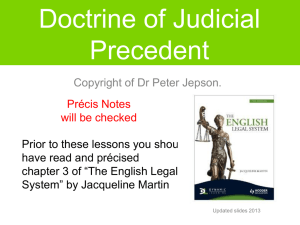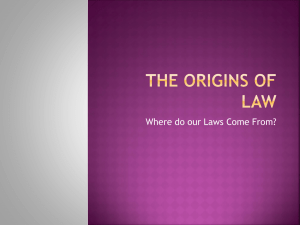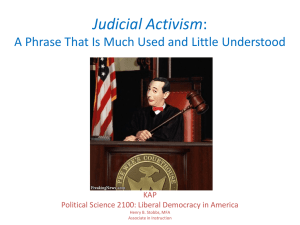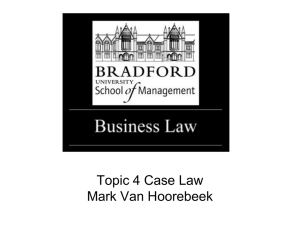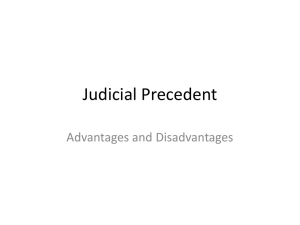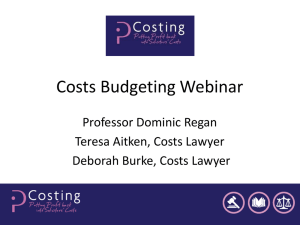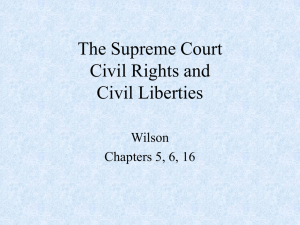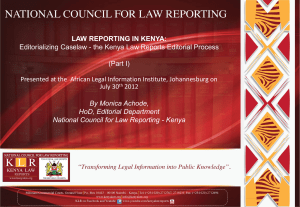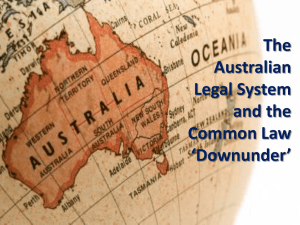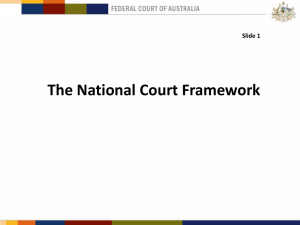JUDICIAL PRECEDENT
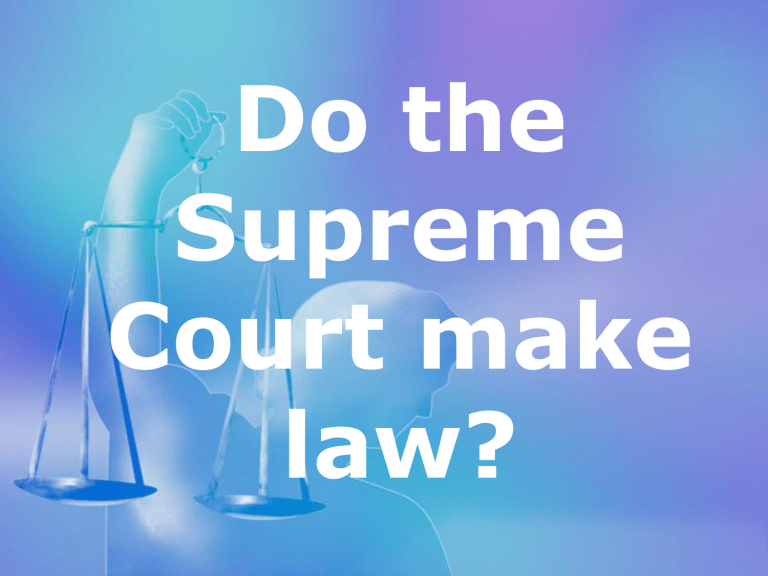
Topic 3
Judicial precedent
Do the
Supreme
Court make law?
• Stare decisis: As with all courts the Supreme Court (SC) believes that certainty in the law is very important.
• Supreme Court Tool box: The SC can use all the tools of precedent that other lower courts can, i.e. overruling, reversing, distinguishing.
• Overruling their own decisions: The SC is the ONLY court that can change any precedent they have made in the past.
• The Practice Statement 1966: This speech by the Head of the judiciary allows the SC to overrule their own decisions.
Judicial precedent
• The House of Lords decided before 1966 that they would not overrule their own decisions.
• This was decided in the case on London Street Train ways v London County Council in 1898 .
• This was because certainty in law was considered more important than the personal hardship of a small number of individuals.
• Before 1966 the House of Lords had very limited law making abilities unless the case formed an original precedent (first of its kind).
Judicial precedent
• The House Lords decided to give themselves the power to overrule their own past decisions.
• BUT only when it is RIGHT TO DO SO.
• Right to do so isn't defined.
• Advantage: Allows the SC to develop the law to the changing needs of society.
• Risk: Too much flexibility means society cant rely on the law when they make decisions, eg imagine changing the speed limit on a road every 10 minutes and the problems this could cause.
important
Precedent must be flexible or law doesn't meet the needs of society
Criminal law affects people’s liberty. So don't change unless have to
Law should evolve slowly
– less risky
Law can only be changed if it benefits the majority of society
Judicial precedent
• Yes , in two ways.
• Original Precedent: As problems arise in society the
SC has to deal with them through a case. The Ratio of this case is a new law, eg Donoghue v Stevenson
1932
• Overruling their own decisions using the Practice statement 1966. But only when it is “right to do so”.
Topic 3
Making law through Original precedent - examples
1. To protect the rights of the unborn child, RE S
(High Court judgment)
2. To allow minors contraceptive treatment without parental consent, Gillick.
3. To develop the law in the light of changing social and cultural developments, e.g. R v R abolished the 250 year old immunity for husbands being charged with rape of their wife.
1. A Change in social conditions in society
2. To reflect change in economic climate
3. To correct errors / restore certainty
4. To develop the law
5. To correct their previous misinterpretation of a statute
6. To develop the law in the light of changing social and cultural developments.
Judicial precedent
Example
1. Change in social conditions in society
British Railways Board v Herrington (1972) when they altered the test for the duty of care (in tort) owed to child trespassers to reflect change in social conditions.
A test of 'common humanity' - doing all that a humane person would have done to protect the safety of the child trespasser.
Overruling their previous decision in Addie v Dumbreck (1920) which held the test was that of injuries caused 'intentionally or recklessly'.
Judicial precedent
Example
5. To correct their previous misinterpretation of a statute
R v Shivpuri 1985 : Departed and overruled Anderton v Ryan by
Facts : D was arrested entering the country, carrying a package which he believed contained either heroin or cannabis, but was in fact harmless ground dried vegetable. D was charged with attempting avoid import restrictions; smuggling.
Ratio/Held : Accepting that previous law had been incorrectly applied, concerning the Criminal Attempts Act 1981 , the HL departed from its previous decision and said an attempted crime that was impossible could still be a criminal offence as per S1(2). D G.
Judicial precedent
Examples
1. A special need for certainty in criminal law – it took 20 years before the House Of Lords used the Practice
Statement in criminal law (Shivpuri)
2. To reflect change in social conditions in society.
As seen in Jones v Secretary of State for Social Services
(1972) where despite 4 out of the 7 Lords agreeing that the previous decision in Re Dowling (1967) was wrong, they decided not to overrule the decision in order to retain certainty in case law.
theories and views
1. Where judges feel parliament should decide on a key social issue they may refuse to make a new law, C v DPP
2. Literal rule judges tend to believe more fervently in the sovereignty of parliament even if it results in absurd results, e.g. Fisher v Bell
3. Declaratory theory of precedent – Some judges believe the law has always existed, judges just declare the law in cases. This means judges don't make law.
4. Precedent has retrospective effect – Some judges believe that new laws should not be made using precedent as it should then be applied to all past cases.
5. Precedent has prospective effect – Most judges believe precedents only apply from the date they are made so this allows changes to the law and make new laws.
Topic 3
Do judges make new laws -
Judicial precedent
Conclusion
Parliament is democratically elected, so it would seem that its members are the best people to make laws for the country.
However, due to lack of parliamentary time, it may be important for some laws to be made by judges. For example the rise of super injunctions or the urgency of the Re S case.
